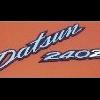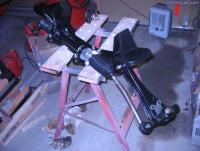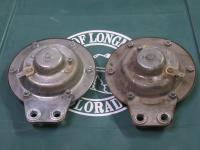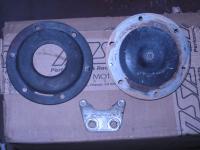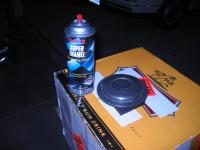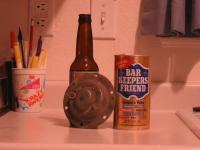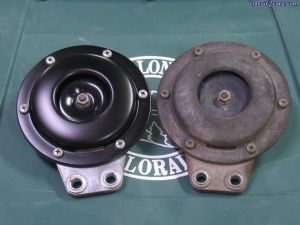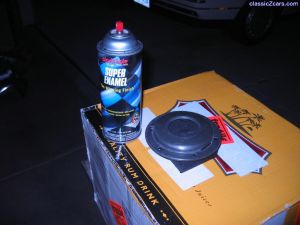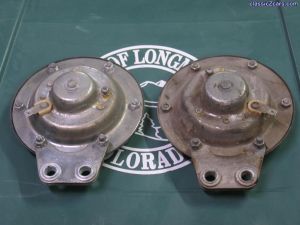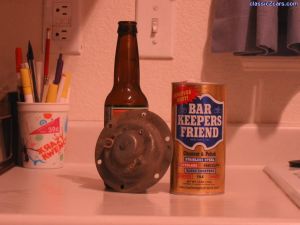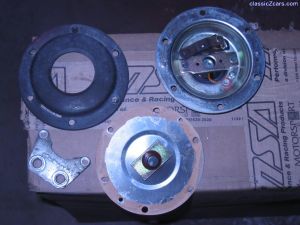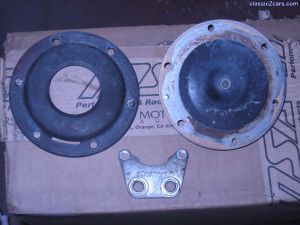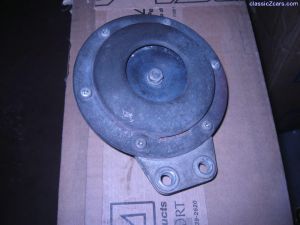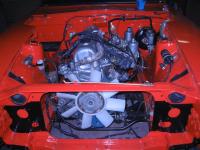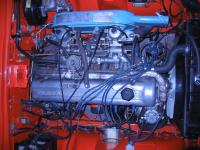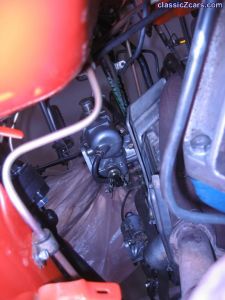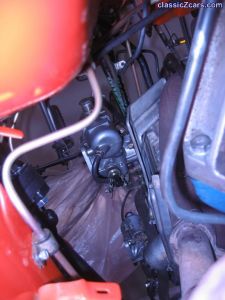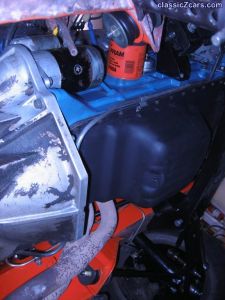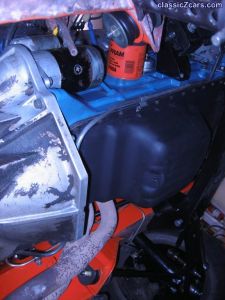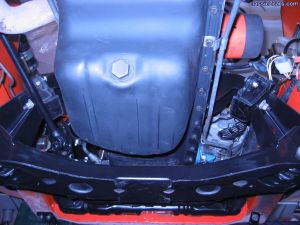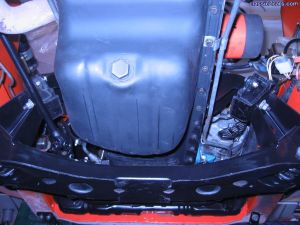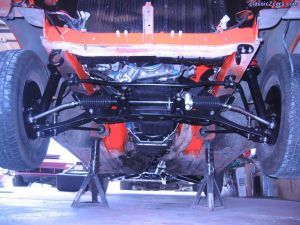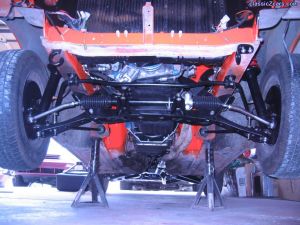Everything posted by kenz240z
-
Save S30-0002
I agree with Mr. Camouflage. Like any project, it's simply a matter of time, effort and money to fix this car, #2. As an amatuer body man, I'd love to test my skills on that roof! Nothing a little hammer & dolly work couldn't fix, by the look of it. If not, then another roof from a suitable donor could be sectioned in along the factory welds/seams. It's not apparent from the photo, but #2 doesn't appear to have any major front end or side impact damage. Hopefully not too much rust anywhere, either. What a diamond in the rough! I am not worthy!
-
Why the Z
Dave, I think you've answered your own question. What your friend says about resale value is true. Not just for a Z car, but for most any car in which the owner has invested $35,000. For full out, true restoration $35 is probably in the ball park. If you plan to do most of the work yourself I'd imagine you could finish the car for a bit less. I guess it all depends on what you want the end result to be. If you don't plan to show the car at concours events, then perhaps you might not require everything to be exactly as it was when the car rolled off the showroom floor. That would cut your investment by half, if not more, depending on how much work you can do yourself. He's also right about the performance aspect, when he says it will never be as powerful as a restored old Chevy (well, at least one with a high performance engine). I wouldn't consider a '38 Coupe with a 383 to be restored. Sounds more like a rod. I'm not all that knowledgeable on the subject, but I don't believe a 383 with a 4 bbl carb was offered in '38. Drop a small block Chevy or Ford engine in your Z and you'd smoke most any old Chevy (if you don't snap your Z in half, that is! ). As far as a memory lane trip, look at the Z's legacy in racing and rallying that many others have posted. Your friend is simply uneducated about the Z in this regard. Perhaps your friend was attempting to be the voice of reason. A true restoration, of any vehicle, is not a project to be entered into lightly. Even "refreshing" a car can require more time, effort and money than most folks anticipate. There are many questions that need long consideration, such as how much work will I do myself? How much will I have someone else do? How much am I willing to pay them to do the work? How hard will it be to find parts, and how much can I afford to spend? Where will parts be stored while work is in progress? Where will the work be done, in my garage or at someone else's shop? Or, should I rent space somewhere? How soon do I want it finished? It can become a project management nightmare. For instance, if you decide to have the bumpers replated halfway through the project, you will probably be waiting 3-6 months, or longer, to get your bumpers back, depending on the replater you use. Whether you restore your Z, or "refresh" it, I think the most important thing is the attention to detail you give it. Go to any car show and really scrutinize the work on some of the fancy looking show cars. You may be surprised to find runs in the paint, wavy panels, grungy engine bays, you name it... While in Las Vegas this spring I visited a display of vintage and collector cars, I think it was at Excalibur. Anyway, all the cars were for sale and supposedly professionally restored. Prices ranged from $50,000 to well over $1,000,000. I was surprised at the number of flaws I noticed on some of these cars! Ultimately, it all comes down to what makes you happy. All I know is that I relished that first drive I took in my Z, when it was still dented & rusty, when the interior was still ratty, and what was left of the most recent paint job was dull & faded. Kenny P.
-
Front suspension rebuild
Hi Mr. Camouflage, I am guessing that the pivot arm is the same as the front transverse link? If so, then you are correct. The bolt installs from the rear, with the nut on the front side. See the attached picture for a shot of the front crossmember, steering rack & transverse link set up from my '73 240Z. Hope this helps! Kenny P.
-
How I refinished the horns in my '73 240Z
I have methodically been "refreshing" my '73 240Z a bit at a time. I've repainted the car, rebuilt the front & rear suspension, installed new carpets, a headliner and a dash cap, refinished the engine bay and just recently had the engine rebuilt. :knockedou One of the last detail items I had left to tackle was the horns. They were pretty cruddy looking after 30 plus years of service. :sick: First of all, here is a list of items that I used to refinish the horns: Phillips screw driver 5/16" nut driver 1 Scotchbrite pad #0000 Steel wool 3M rubbing compound PPG wax & grease remover Satin black enamel paint Wire brush Barkeepers friend an old tooth brush an few old socks Here are the steps I followed: 1. Use the screw driver and nut driver to remove the six screws that hold the horn together. Notice that the two screws that secure the mounting bracket to the horn are longer than the rest. Also, note that there is a lock washer sandwiched between the horn and the mounting bracket, as well as another lockwasher between the mounting bracket and the nut. Also, there are two little metal spacers that fit in the mounting bracket. Don't lose any of these small items! Once all six screws are removed the horn can be separated into the front cover, diaphragm, and rear cover. 2. Clean the screw heads with the Scotchbrite pad. Place the pad on a hard surface, such as a workbench, and grip a screw by the threads. Rub the screw over the Scotchbrite pad until it is nice and clean. Repeat this process with the remaining screws. Once all the screw heads are clean polish them up with the steel wool. It should make them fairly shiny. :knockedou 3. Use a wire brush to clean the nuts. I used a cup brush on an angle grinder. A bench grinder with a wire wheel could be used, or you could use a hand held wire brush. If you use a wire brush on a power tool, BE VERY CAREFUL! WEAR EYE PROTECTION! WEAR GLOVES! A wire brush on a power tool can easily launch the nut into space. If that happens, consider yourself lucky if it doesn't hit you :hurt: , hit & nick something around you (like your Z! ), or end up lost . 4. Clean and polish the black metal disc on the front of the diaphragm. Use an old sock, or other cotton cloth, damp it with water, and apply a bit of the rubbing compound to the sock. Use small, circular motions to polish the disc. Wipe clean with a clean, dry portion of the sock. 5. Clean the front cover with warm soap and water. Dry thoroughly. Clean the surface with a bit of wax & grease remover on another old (clean, please!) sock. Scuff the surface with the Scotchbrite pad (note - be sure all heavy dirt, oil & grime deposits are removed BEFORE scuffing the surface with the Scotchbrite pad!). Wipe the surface clean with a bit of wax & grease remover in preparation for painting. Allow the cover to dry thoroughly. 6. In a well ventilated area, spray a couple of light coats of the satin-black enamel on the front cover. I placed the cover on a block of wood, up on a box on top a small, portable work bench in my garage. Once the cover has been painted, hang it up with a bit of wire and let it dry. 7. Clean the back cover with Barkeepers friend, or similar cleaner. Be careful when cleaning the back cover, as it contains the coil & other electrical parts. DO NOT SUBMERGE IT IN WATER! I used another old sock, damped it with water, and then applied a bit of the cleaner to the sock. Then, I used it to clean the larger areas of the back cover. For the nooks & crannies I used the toothbrush. I damped the bristles with a little water, applied a small amount of the cleaner to the tooth brush, then cleaned the tight spots. I used a damp rag to wipe the surface clean. Don't tell my wife, I cleaned the back cover at the kitchen sink while she was away at work! :paranoid: 8. Clean the mounting bracket using the same method as for the back cover. 9. When the paint on the front cover has dried, reassemble the horn. Notice that there are 2 dimples on the perimeter of the back cover, located 180 degrees apart. Also notice that the diaphragm has 2 small holes (conveniently located 180 degrees apart, see the connection here?), in addition to the 6 mounting holes. These 2 small holes fit over the dimples, insuring that the diaphragm lines up correctly with the coil in the back cover. The front cover has 2 slots around the perimeter, located 180 degrees apart. Place the front cover over the diaphragm and align the bolt holes so that one slot is at the top of the horn, and the other is at the bottom. 10. Install the mounting bracket to the bottom 2 mounting holes using the 2 longer screws. Don't forget to install the lockwashers! Each of these screws should have a lockwasher between the rear cover and the mounting bracket, and another lockwasher between the bracket and the nut. Install the 4 short screws in the remaining holes, put a nut on the back of each screw and tighten them all down. Use the screw driver and nut driver to complete this step. 11. Reinstall your "new" horns back on your Z! They may not be show quality, they may not be totally authentic in appearance, but they sure as heck look a lot better that they used to! :classic: This post has been promoted to an article
-
Horn comparison
-
Painting the horn front cover
-
Backside, clean vs. dirty
-
Suds...
Barkeepers Friend works well for cleaning old metal items, especially chrome and stainless steel. The beer was for me!
-
Horn disassembled #2
-
Horn disassembled #1
-
Backside of horn
-
Horn, as was...
-
New: Help me get this car running again!
If spraying penetrating fluid into the cylinders works and you are successful in turning the engine over with a breaker bar on the crank pulley bolt be sure to change the oil before you attempt to start the engine. The penetrating fluid will thin out the oil in the pan and could cause problems if the engine was started.
-
Quick Favor
From your description, the "H" shaped battery hold down is probably a generic aftermarket item. I've seen some that fit that description at the local auto parts stores. The photo that Webdawg1 posted is what you want. Victor's post gives you a source for purchasing the battery hold down. His suggestion of purchasing the battery tray, too, is a good one.
-
Cracked block or bad gasket??
The only way to truly find out is to remove the cylinder head, which is probably what you need to do anyway, as you don't want the problem to get worse. Here are some things to look for: Signs of water/coolant in the oil White, billowy smoke emitting from the exhaust Moisture in the PCV valve hose These were a few of the signs when the cylinder head on my '73 developed a problem. The engine in my car had coolant leaking into a few cylinders. I ended up having the engine completely rebuilt. Hope this helps!
-
Rebuilt engine, installed and running!
Thanks, GunnerRob. That is a very informative link. I would adjust the valves myself, but since the engine was recently rebuilt I'm going to press the shop that did the work to adjust them. Kenny P.
-
Rebuilt engine, installed and running!
Today I finished the final preparations for firing up the rebuilt engine I recently installed in my '73 240Z. Back in March I developed a head ache, so to speak... A white, billowy, sweet smelling smoke was issuing forth from my exhaust. I had hoped it would only be a bad head gasket, but turned out to be a problem with the head itself leaking coolant into a few cylinders. :dead: Anyway, off with the head, took it to T&D Auto in Hygiene, CO, a fine Z focused shop. Sure, they could replace the head, but they said I should bring the engine in, too. So, about a month ago I picked up the rebuilt engine. I was still working on rebuilding the rear suspension, so the engine had to wait awhile... I finally finished the rear suspension rebuild and dropped the rebuilt engine into my Z last week! I've been busy hooking everything back up and on Friday I got everything put back together and was ready to fire it up. When I first turned the key, nothing happened. Buzz kill... went back through all the electrical connections in the engine bay, to make sure everything was hooked up correctly. Everything still looked good, so I gave the key another twist. Still nothing... it was then that I remembered to look at the connections in the steering column. Sure enough, the ignition switch connector was not seated! :stupid: Turned the key again and they engine cranked! But, it wouldn't start. The noodle scratching began... I pulled the fuel line and cranked the engine. Gas was flowing. Good. I pulled the coil wire and put it next to one of the strut tower bolts. Cranked the engine and saw a spark. Good!. Pulled a plug and grounded it. Cranked the engine, weak spark... Checked the point gap, it was off. Fixed that. Cranked the engine, still nothing. :mad: What next? I was ready to pull what hair I have left out of my head. Hmm, what about the timing. Kind of hard to check without the engine running. But, possible to check the static timing. So, bump engine until #1 piston is at top dead center. Check. Verify timing marks line up with pointer. Check. Remove distributor cap and see where rotor is oriented. Hmm, looks a little off. Time to consult the Chilton's manual. Somewhere in the section on engine mechanical repair there is a sketch of how the distributor drive spindle should be oriented. I removed the distributor and looked at how the shaft was oriented. Hmm, the manual shows the shaft oriented at about 11:00. Mine looks like its more like 1:00. So, I removed the oil pump, made a bit of a mess, and after a couple of tries got the spindle oriented like the manual says. In goes the distributor, turn goes the key, and badabing! The engine roars to life! Ah, all is well for the moment. The valves are making a bit of a racket, so back to the shop my Z will go next week. I'll have them go through the valve adjusment, set the timing and tweak the carbies. Oh, and I have a new Pacesetter header that I'll have them put on. My Z is finally back on the road! Kenny P.
-
Looking up at the carbies
-
Looking up at the carbies
-
Lookin' up at the starter
-
Lookin' up at the starter
-
Lookin' up at the engine
-
Lookin' up at the engine
-
A shot from down under...
A shot of the underside of the car up on jack stands. Had to grease the ball joints & tie rod ends before hittin' the road!
-
A shot from down under...
A shot of the underside of the car up on jack stands. Had to grease the ball joints & tie rod ends before hittin' the road!




